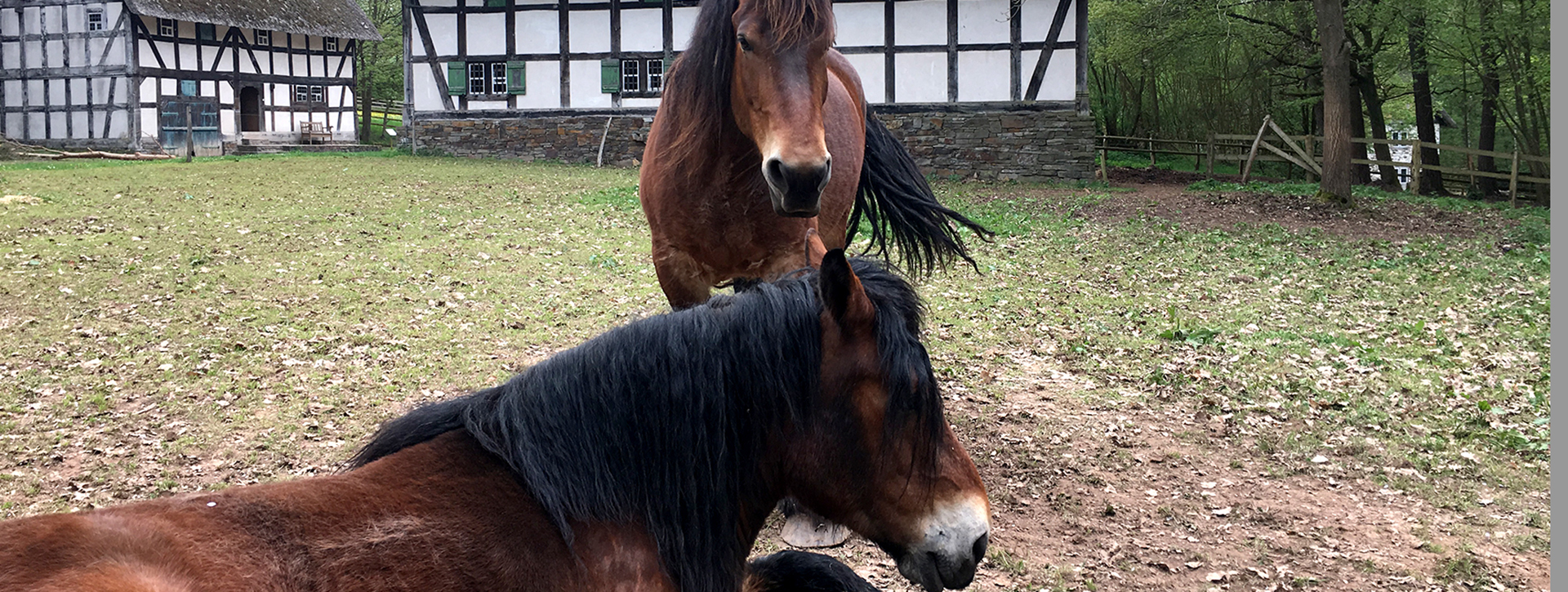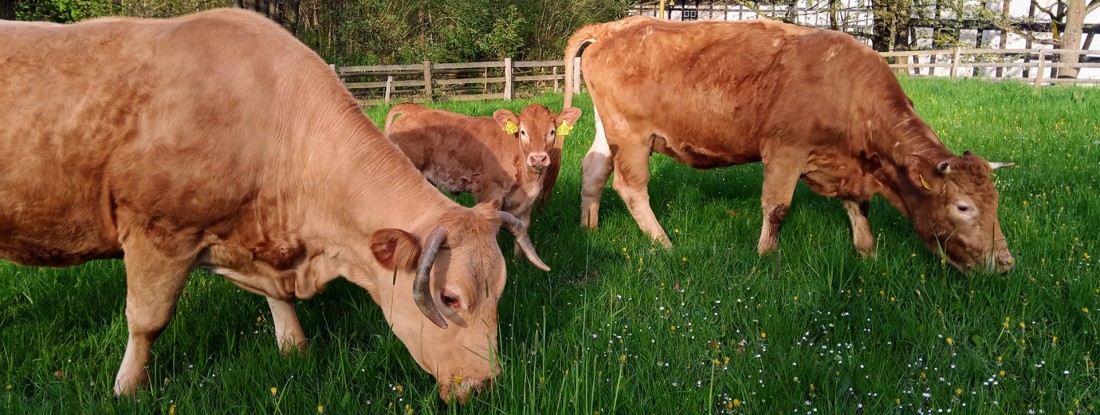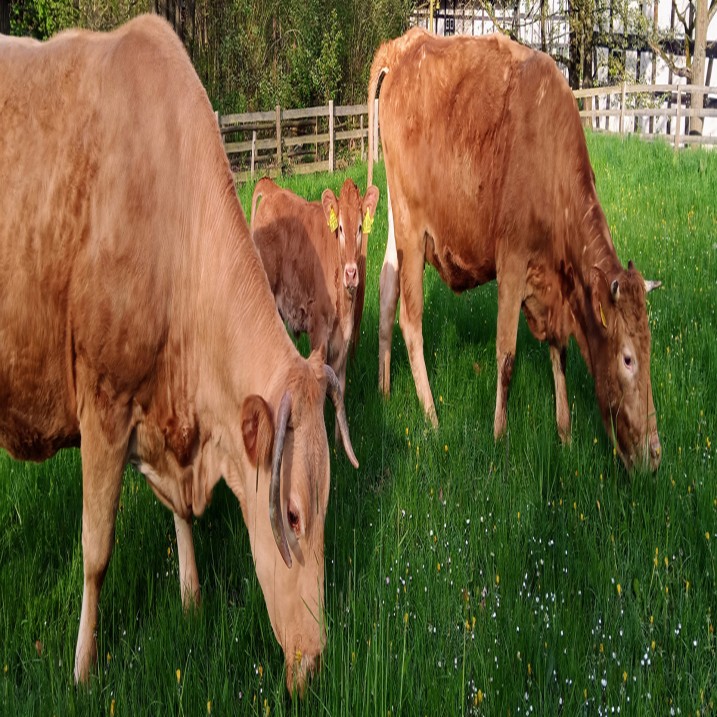Animals in the museum
Horses, cows, pigs, geese, chickens – visitors will come across animals everywhere on the museum grounds. Because the museum not only wants to show how people lived in the past, but also what they grew in the gardens and fields and which animals belonged to the farm.

Ardennes draft horse
The Ardennes is characterized by a broad body with short, stocky legs on long, sloping shoulders and a muscular gluteal region. The head is mostly straight and sits on a short and powerful neck. Robust and reliable, they were once used as draft horses. This breed is represented in the museum by Belinda, who likes to be petted by visitors big and small.

Donkey
The donkey comes in the colors white to gray to black-brown. The head is heavy, the ears long and the mouth wide. Most countries have neither breeder organizations nor breed standards, so donkeys vary greatly in size, type and appearance. The animals are undemanding and patient, have a friendly nature and are resistant to the weather. In Central Europe, donkeys were used especially for transporting loads.

German pasture pig
In cooperation with the University of Giessen, the German pasture pig, also known as the Hanoverian-Brunswick country pig, was bred back in the LVR open-air museum in Kommern. This breed became extinct around the 1970s. Characteristic of the German pasture pig are a black and white coloration, a dense coat of bristles, small, upright ears and a pointed, straight snout. The characteristics of the German pasture pig were bred out again through targeted crossings of different pig breeds. In the meantime, the resilient pigs not only live in the LVR open-air museum in Kommern, but also in other museums and farms.
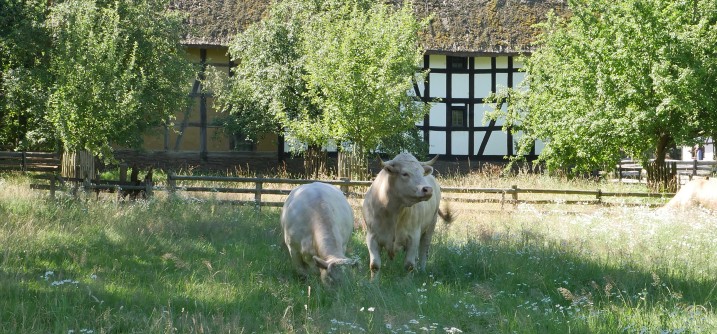
Glan Donnersberger cattle
The Glan-Donnersberger cattle were introduced as a breed from the Palatinate at the beginning of the 19th century in the Eifel and in the Hunsrück. This robust and undemanding breed was ideal for the Eifel with its harsh climate and barren soil. Due to the inheritance law of real division with equal division of property among all heirs, the possessions in the Eifel were heavily fragmented. Livestock farming was an important source of income for farmers with little land. In addition to milk and meat, the farmers needed working animals that got by with the little and poor feed. In the 1980s, the Glan-Donnersberger cattle were threatened with extinction. We have made it our task to preserve and breed back Glan cattle.

Mergelland Sheep
In the 18th century, for example, there were large flocks of sheep in the areas of the High Fens, which could use the barren grass and heathland as pasture. Here the soil is barren. This is due to the marl subsoil. The Mergelland sheep were kept on this marlland, which cared for the landscape with its special way of eating. With short, vertical head movements, it only plucks off the top part of the plant and does not tear it up together with the root, like other breeds.
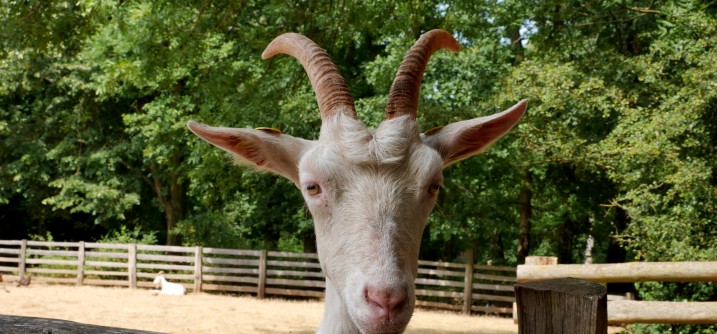
White German noble goat
Goats were often referred to as the "poor man's cow" because not everyone could afford a cow. Goats' main uses were their milk and fur. but were also held by workers, small employees or civil servants in order to relieve the household budget. The frugal goat could find food almost anywhere and was mostly left to the care of children or old people when looking after it.
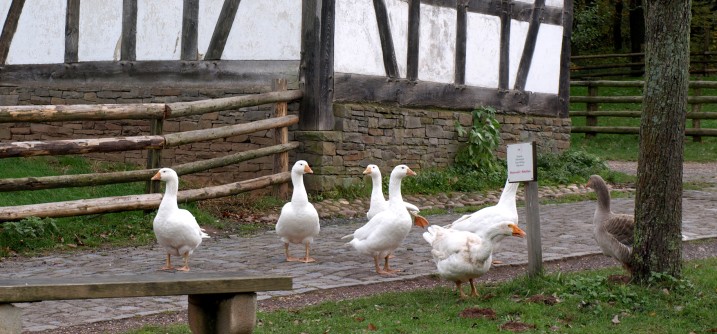
Geese
Pomeranian geese and mute geese can be found in the open-air museum. The Pomeranian goose is one of the domestic geese and is descended from the greylag goose. They were mainly kept for their meat, fat and feathers. Mute geese were also used for meat, but also for egg production.

Chicken
The German Sparrowhawk belongs to a medium-weight and powerful breed of chickens, powerful and large. The animals are robust, but have a low breeding instinct. This chicken breed was widespread in the Rhineland.
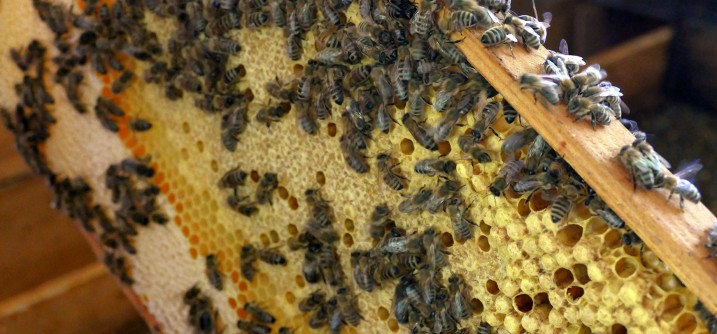
Bees
Keeping bees was a part-time job for some farmers and an important trade for the monasteries - not so much because of the honey as to obtain beeswax for church candles. Up until the 19th century there was hardly any mention of beekeeping: anyone who found a wild swarm of bees on a tree knocked them off the branch into a wicker basket, the beehive as we still know it from pictures today. When the combs with wax and honey were to be removed from this beehive at the end of the summer, the basket was turned upside down, a new, empty wicker basket was placed on top and the bees had to wait until the bee colony had moved into the new basket. It was only with sophisticated wooden beehives that the honeycomb could be easily removed. The principle of this invention is to offer the bees wooden frames with a wax sheet on which they can build their honeycomb. It wasn't until 1851 that it was found out when the bees felt comfortable in such a wooden housing. Since then, the beekeeper has been able to pull wooden frames full of honeycomb out of the hive without damaging anything. He then throws the honey out of the combs with a centrifuge.


